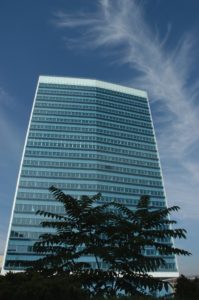
Several historical influences have come together to form the Bosnia and Herzegovina that we know today. Over the millenia, the rich civilization and culture of this country has been influenced by the cultures of many different peoples : the Byzantines and the Franks, Greeks and Ottomans, Hungarians and Venetians. Therefore, Bosnia and Herzegovina are full of sociological, economical, and denominational differences. Combined with local tradition, all of these cultures have created a very peculiar area in Europe, one that is home to many different faiths and ethnicities. This multi-cultural mix is the defining characteristic of Bosnia and Herzegovina today.
Picture: Charter called ‘Povelja Kulina bana’, written in old bosnian in ‘bosancica’ letters © stlraja.com
- 1180 : Ban Kulin becomes the founder of the medieval Bosnian state: a charter between Ban Kulin and Dubrovnik in 1189 shows that Bosnia and Herzegovina was, in fact, a state at this time.
- 1463 : Bosnia and Herzegovina are conquered by the Ottomans and becomes a sandjak of the Ottoman Empire, with Sarajevo as the capital.
- 1878 : The Berlin Congress declares Bosnia and Herzegovina to be part of the Austrian-Hungarian Empire.
- 1914 : Archduke Francis Ferdinand of the Habsbourg, heir to the throne of the Austrian-Hungarian Empire, is assasinated in Sarajevo. This event is the spark that causes the explosion of the First World War.
- 1918 : Bosnia and Herzegovina are integrated into the Kingdom of Croatians, Serbians, and Slovenians, which later becomes the Kingdom of Yugoslavia.
- March 1992 : The Bosnian Parliament declares independence following a national referendum.
- April 1992 : The international community recognizes the Republic of Bosnia and Herzegovina, during its incorporation into the United Nations.
- December 1995 : Signing of the Dayton Agreements in Paris, which ended the long and bloody ethnic war in the Balkans, that left over 200,000 dead and 2.1 million displaced.
- June 16 2008 : In Luxembourg, the Stability and Association Agreement between Bosnia-Herzegovina and the European Union is signed.
- July 2008 : Bosnia-Herzegovina and the European Commission sign a financing agreement for the 2007 national program, the Instrument for Pre-Accession Assistance (IPA).
- Nov. 9 2010 : The short-stay visa requirement for citizens of Bosnia and Herzegovina is waived
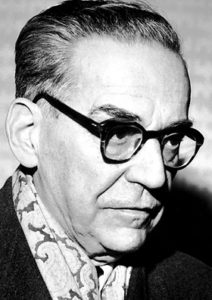
The administrative, economic, and cultural center of Bosnia and Herzegovina is Sarajevo. The city and its surroundings still contain traces of ancient civilizations and their wealth, such as the neolithic Roman Baths, or Butmir Ilidza. Sarajevo is known as a multicultural and multi-denominational city where buildings of different religions rub shoulders. In 2005, the city of Sarajevo became the 83rd member of the International Association of Peace Messenger Cities. The most important mission of the Association is to promote the spirit of peace, tolerance, and respect for multicultural diversity in the world. Sarajevo is also a city of cultural encounters. Each year, the Sarajevo Film Festival takes place in August, the Mess Theatre Festival in October, the Winter Festival in February, and the Jazz Festival in November.
In 1984, Sarajevo hosted the XIV Winter Olympic Games. The high quality of the sports facilities and the famous tracks of the cities of Bjelasnica, Trebevic, Igman, and Jahorina, ensured that the competion ran smoothly.
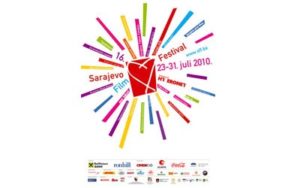
Several artists from Bosnia and Herzegovina, particularly filmmakers, experience international recognition. Director Danis Tanovic, for example, won the Oscar for best foreign movie for “No Man’s Land” in 2001. Another director, Jasmila Zbanic, was awarded the Golden Bear for the best film of the 56th Berlin Film Festival in 2006, for his first feature film “Grbavica”.
Picture: 14th Film Festival of Sarajevo, coeur de Sarajevo pour le film “Buick Riviera” © www.sff.ba
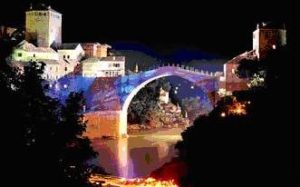
Mostar bridge
In the second largest city of Bosnia and Herzegovina, Mostar, the rebuilding of this bridge symbolises a link between two neighborhoods on either side of the river. On one side is a predominantly Christian neighborhood, and on the other, a neighborhood predominantly populated by Muslims. This bridge is considered to be a “Patrimony of Humanity” by UNESCO.
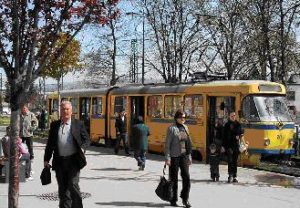
The Tram
Sarajevo was the first European city to use a tramway system in 1885. At the time, the trams were pulled by horses or mules.
Picture : Wikimedia Commons
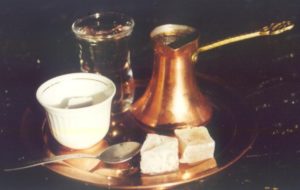
Bosnian coffee
One may say that Bosnian coffee is the national drink and an important social activity. In fact, in Bosnia and Herzegovina, people drink coffee at any hour of the day, for any occasion. Coffee usually comes in the form of the traditional “Bosanska kafa”. It is similar to what we call “Turkish coffee”, and is served with sugar cubes and “rahatlokum” (Turkish delight).
© Botschaft von Bosnien-Herzegowina, Paris



